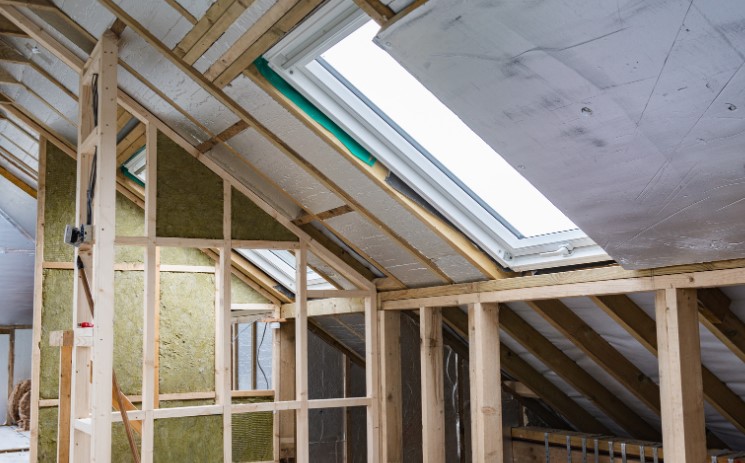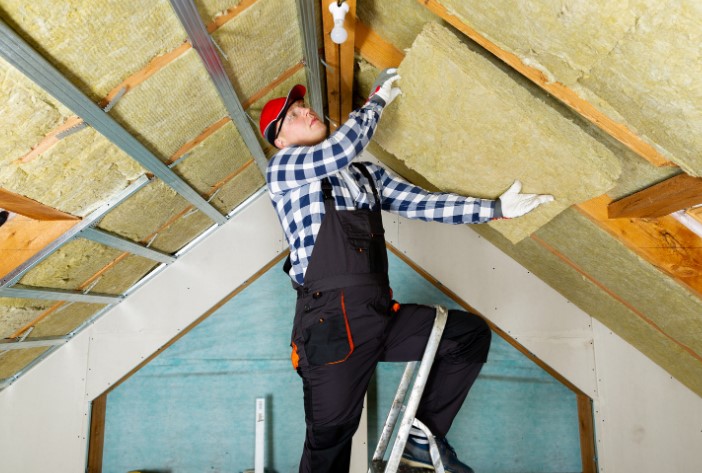- What Are Loft Insulation Thickness Regulations in the UK?
- What are Types of Loft Insulation and Their Thickness Requirements?
- How Thick Should Loft Insulation Be?
- How Does Insulation Thickness Impact Energy Efficiency?
- What Happens If Loft Insulation Isn’t Thick Enough?
- Final Thoughts
- Frequently Asked Questions (FAQs)
Loft insulation plays a critical role in maintaining a home’s energy efficiency, reducing heat loss, and cutting down energy bills. In the UK, adhering to loft insulation thickness regulations is not just about comfort—it’s about compliance with building standards.
In this guide, I’ll walk you through everything you need to know, from regulations and how thick should loft insulation be to material requirements and the benefits of proper insulation thickness.
What Are Loft Insulation Thickness Regulations in the UK?
Why Are There Regulations for Loft Insulation Thickness?
The UK government has established insulation thickness regulations as part of its efforts to improve energy efficiency in buildings. Proper insulation reduces heat loss, minimizes energy consumption, and helps the country move closer to its carbon reduction goals.
These regulations ensure that all homes meet specific thermal performance standards, making them cost-effective and environmentally friendly.

What are the Current Loft Insulation Standards in the UK?
The current standard for loft insulation thickness in the UK is 270mm for blanket-style materials such as fibreglass or mineral wool. This ensures the loft meets the required U-value (a measure of thermal performance), which is approximately 0.16 W/m²K in new builds.
For retrofitting older homes, achieving the same thickness is recommended but can vary depending on space and material type.
What are Types of Loft Insulation and Their Thickness Requirements?
Blanket Insulation (e.g., Fibreglass and Mineral Wool)
- Recommended Thickness: 270mm.
- Best For: Easy-to-install option for standard loft spaces.
- Fibreglass and mineral wool are popular for their affordability, ease of installation, and excellent thermal resistance.
Loose-Fill Insulation
- Thickness: Approximately 250-300mm, depending on the material (e.g., cellulose or recycled products).
- Best For: Lofts with irregular or hard-to-reach areas.
- Loose-fill materials offer flexibility but may settle over time, requiring regular checks.
Rigid Foam Boards
- Required Thickness: Typically 100-150mm due to higher thermal performance (better R-value per inch).
- Best For: Spaces with limited headroom or specific structural needs.
- Commonly used in areas where a thinner layer is necessary without sacrificing insulation quality.
Reflective Foil Insulation
- Thickness: Varies and is often combined with other materials.
- Best For: Retaining heat in specific scenarios, such as cold climates or under roof tiles.
| Insulation Type | Recommended Thickness | Best Use Case |
| Fibreglass/Mineral Wool | 270mm | Standard lofts |
| Loose-Fill Insulation | 250-300mm | Irregular loft spaces |
| Rigid Foam Boards | 100-150mm | Low headroom areas |
| Reflective Foil | Varies | Supplementary heat retention |
How Thick Should Loft Insulation Be?
Minimum Thickness Based on Material Types
For most UK homes, 270mm of fibreglass or mineral wool is the gold standard. However, some materials, like rigid foam boards, can achieve the same thermal resistance with thinner layers (100-150mm).
When retrofitting an older home, check existing insulation. If it’s less than 100mm thick, upgrading to meet current standards is strongly recommended.
Thickness for Retrofitting vs. New Builds
New builds must comply with the 270mm standard to pass building inspections. In older homes, retrofitting might require adjustments depending on the space and structural limitations. Adding insulation layers is often an effective solution.

How Does Insulation Thickness Impact Energy Efficiency?
Thermal Resistance (R-value) and Heat Loss Prevention
The thicker the insulation, the better its R-value—a measure of its ability to resist heat flow. Properly insulated lofts can reduce heat loss by up to 25%, significantly lowering energy consumption and utility bills.
The Cost vs. Savings Debate
While thicker insulation may involve higher upfront costs, it pays off in energy savings over time. Homeowners can save up to £250 annually on energy bills by upgrading to the recommended insulation thickness. Additionally, government grants are available to offset costs.

What Happens If Loft Insulation Isn’t Thick Enough?
Consequences of Non-Compliance with Regulations
- Reduced Efficiency: Insufficient insulation allows more heat to escape, increasing energy bills.
- Inspection Issues: New builds and renovations may fail to meet building regulations.
- Environmental Impact: Increased carbon footprint due to higher energy usage.
Addressing Insufficient Insulation in Older Homes
Retrofitting is the solution for older properties with outdated or thin insulation. Adding layers of blanket insulation or switching to high-performance rigid boards can bring your home up to code.
Final Thoughts
Proper loft insulation is crucial for meeting UK building regulations, reducing energy bills, and contributing to a greener future. If your current insulation falls short of the 270mm standard, upgrading is a worthwhile investment. With numerous materials to choose from and government grants available, there’s no better time to ensure your home stays warm and energy-efficient.
Related Article: How to Stop Condensation in Loft?
Frequently Asked Questions (FAQs)
1. What is the recommended loft insulation thickness in the UK?
The recommended thickness is 270mm for fibreglass or mineral wool insulation.
2. Can I use a thinner insulation material and still comply?
Yes, rigid foam boards can meet regulations with a thickness of 100-150mm, thanks to their higher thermal efficiency.
3. Are there grants or financial support for upgrading insulation?
Yes, schemes like the Energy Company Obligation (ECO) provide financial aid for insulation upgrades.


0 Comments